A crossbite is a kind of dental misalignment where the upper and lower teeth don’t connect in the correct position when you bite. Dentists can usually spot a crossbite at an early age. They are likely to recommend fixing it because if left untreated, this condition can result in an uneven jaw and numerous oral health problems.
There are various crossbite treatments available, including elastics, dental braces and surgery. The recommended treatment for you will depend on whether you have a posterior or anterior crossbite, and how severe it is.
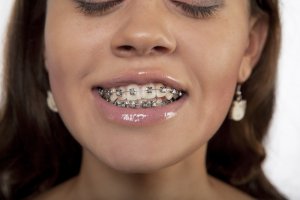
Keep reading to find out more:
- What is a crossbite?
- All the different types of crossbite
- Crossbite correction
- What happens if you don’t fix a crossbite?
- How it’s treated at different ages
- How much does jaw realignment surgery cost in the UK?
We hope the information in this article helps you understand this condition better and seek the right treatment.
In This Article
What is a crossbite?
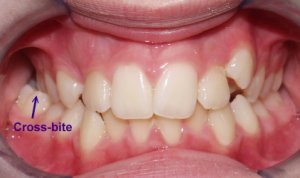
A crossbite occurs when the upper teeth sit on the inside of the lower teeth or when the upper back teeth overhang the lower teeth. The outward appearance can be an uneven or asymmetrical jaw.
This condition may be a result of genetic factors, such as overcrowded teeth, or behavioural factors, such as thumb sucking. Because there are lots of different ways in which a crossbite can occur, there are also lots of different terms used to describe crossbite teeth.
Types of crossbite
There are different ways to classify this condition according to how many teeth are affected, where in the mouth they are, and what position they are in. Here is a brief overview of the different terms used to describe a crossbite:
Anterior crossbite
An anterior crossbite, also known as an underbite, affects the front of the mouth, meaning the upper teeth rest behind the lower teeth at the front. There are a few different causes, including:
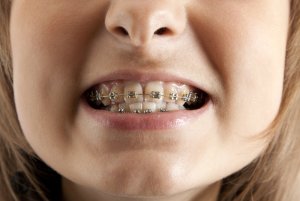
- Overcrowded teeth
- Mouth breathing as a child
- Thumb sucking
- Repairs to cleft lips
This type of crossbite can be quite noticeable, causing the chin to protrude or the jaw to look uneven.
Posterior crossbite
Posterior crossbites affects the back teeth. Again, the upper teeth sit inwards from the lower teeth, when they should be further out. The causes of this type of crossbite are similar to those that affect the front teeth. Another contributing factor can be baby teeth falling out late, and permanent teeth appearing in the wrong order and position.
Posterior crossbites can be really simple to treat, especially if caught early when the permanent teeth are erupting.
Buccal and lingual crossbite
These terms describe whether the teeth are too far out towards the cheek (buccal) or too far in towards the tongue (lingual). With either of these types, you can usually feel a lot of the biting surface of the inner tooth when you close your mouth.
Bilateral and unilateral
A bilateral crossbite diagnosis means that both sides of your mouth are affected by the crossbite, whereas a unilateral crossbite is just on one side of your mouth. The treatment that you receive will probably look the same for these issues, but the mechanics of what your dentist does might be a little different.
Single tooth and segmental
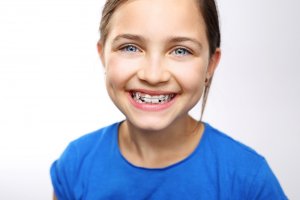
A single tooth crossbite affects just one tooth. It can happen when a bottom tooth sticks forward too much (usually one of the front teeth or a canine) or when an upper tooth is pushed towards the inside of your mouth.
A segmental crossbite means that a few – but not all – of the teeth don’t line up. It will normally affect two or three teeth in a row.
Here’s a recap on this crossbite terminology and how each one affects the dental arches:
Type of crossbite | What it means |
Anterior | Affects front teeth |
Posterior | Affects rear teeth |
Buccal | Teeth positioned towards cheek |
Lingual | Teeth positioned towards tongue |
Bilateral | Affects one side of the mouth |
Unilateral | Affects both sides of the mouth |
Single tooth | Affects one tooth |
Segmental | Affects just 2-3 teeth |
Treatment options for crossbite correction
Dentists may have many terms to define a crossbite, but the treatment options are similar in most cases. Crossbite teeth treatment is best started in childhood, when teeth and bones are much easier to move because they aren’t fused in place.
There is evidence which suggests that if crossbite braces treatment is started early, it’s up to 80% effective without other treatment being required.
Misaligned teeth are not just a cosmetic issue when it comes to oral health and wellness. Any time teeth don’t fit together properly, abnormal wear and tear can occur on affected teeth along with jaw issues. Crossbite occurs when the upper teeth fit inside of the lower teeth. This misalignment of teeth (or bone) can affect one tooth or many teeth. But, the greater worry is how it can affect the jaw.
If a crossbite is not corrected, it can wear down the enamel of the tooth as the jaw shifts to the side. It can also cause lopsided jaw growth. Depending on how severe the crossbite is, treatment may incorporate a palatal expander, a fixed or removable orthodontic appliance used to make the upper jaw wider. Along with the expander, the patient would have an appliance like braces or clear aligners to move the teeth into proper position.
Dr. Travis R. Willey
Treating a crossbite with braces
A very common way to correct both posterior and anterior crossbites is with orthodontic treatment on the upper and lower teeth.
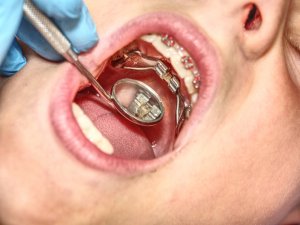
Crossbite braces commonly use a palate expander. This is a device that works on widening the upper jaw so that the top teeth will sit properly in line with the lower teeth.
Palate expanders need to be adjusted regularly, and in small increments they push the teeth in the upper jaw further apart. There is a rapid expansion method that can achieve the correct position within the space of a few months.
After the palate has been expanded to the correct size, there may be further teeth straightening required. Various kinds of fixed braces can be used for this. Once all of this orthodontic treatment is completed, dental retainers help keep the teeth in place.
Can you fix crossbite without braces?
Not everyone likes the idea of fixed, metal braces. Fortunately, there are alternatives that can be just as effective for many cases, such as invisible aligners or clear brace brackets like NewSmile.
Do be aware that anything other than metal braces will require private treatment; the NHS only funds metal braces.
It may also possible to treat a posterior crossbite with just elastics, which you can read more about further down.
Can Invisalign fix crossbite?
For patients with mild to moderate crossbite, Invisalign clear aligner braces can be an effective orthodontic treatment. Unlike metal braces, Invisalign aligners are almost unnoticeable. Plus, there’s the added convenience of being able to remove the aligners for up to two hours a day.
In the following video, a patient named Kitty shares the start of her journey with Invisalign treatment for overcrowding and crossbite:
Fixing posterior crossbites with elastics
Crossbite teeth at the back of the mouth can sometimes be fixed with posterior crossbite elastics. This involves the orthodontist fixing a hook to the inside of the top tooth and the outside of the lower tooth, with an elastic band connecting them.
The point of this is to pull the back tooth outwards so that it will sit snugly over the lower tooth like it should. It is a pretty simple process that can take as little as three or four months.
Jaw realignment surgery

In more severe cases of crossbite, surgery may be needed. Having an operation can be a worrying experience, but it is a reasonably common procedure. The NHS covers jaw realignment surgery costs in the UK for children, and for some adults.
Crossbite surgery will normally be preceded by a year to eighteen months of braces, and the removal of wisdom teeth, if you have any. This is necessary since the surgery to fix your asymmetrical jaw takes place at the back of your mouth.
In jaw realignment surgery, for adults or children, the jaw is broken and repositioned. Once this is complete, the surgeon adds plates and screws to hold it in place. The incisions are all made inside your mouth so there shouldn’t be any visible scarring.
Crossbite surgery recovery takes six to 12 weeks. After this, a further 4-6 months of orthodontic treatment may be needed.
To help calm any nerves you or your child might have, you can ask your dentist to show you pictures of crossbites before and after surgery. Seeing these should help you understand what the crossbite treatment results will be like.
How much does crossbite surgery cost?
Crossbite is normally treated in childhood, in which case it is free on the NHS. But, there can be reasons why you make it to adulthood and still have a unilateral or bilateral crossbite.
Because of the problems that are associated with not receiving crossbite correction, you may be able to still get this treatment through the NHS. It is worth speaking to your dentist about your options. If you are eligible for NHS jaw realignment surgery and braces, the cost will be £282.80 in England (the Band 3 treatment charge).
You may discover you are not eligible for NHS crossbite surgery as an adult, or you may prefer to be treated privately. Private jaw realignment surgery costs in the UK are based on a lot of variables, which all contribute to crossbite surgery costs.
The total cost of jaw surgery can be anything from £2,500, and possibly much higher. Your dentist or surgeon will provide you with an accurate quotation.
What problems can a crossbite cause?
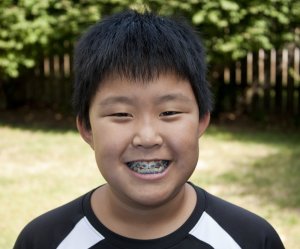
Crossbite teeth might not seem like a big problem aesthetically, but not getting the correct crossbite treatment can store up problems that will affect your oral health later in life. There are lots of problems associated with a posterior or anterior crossbite, such as:
- Increased risk of tooth decay
- Gum disease
- Excessive wear on gums and teeth
- More chance of grinding teeth, or bruxism
- Cheek biting when trying to eat food
- Higher chances of headaches due to tension
- An asymmetrical jaw
Because of the risks that come with an untreated crossbite, it is likely that NHS orthodontic treatment will be offered. Find more information about what the NHS can offer here.
Can you fix crossbite in adults?
It is never too late to get your teeth fixed and straightened. All of the procedures mentioned here – braces, elastics, surgery – can be used for crossbite treatment in adults too. If being treated with braces, many adults opt for clear braces or invisible aligners to make their treatment less conspicuous.
Conclusion
Crossbite is a relatively straightforward dental problem to fix, a little simpler in children than adults. Listening to your dentist talk about crossbite treatment might seem intimidating, but if you don’t understand it’s ok to ask questions. The treatment will pretty much always require having something fitted in your mouth, whether it’s hooks for posterior crossbite elastics, braces, or metal plates from surgery.
Remember, getting crossbite braces doesn’t necessarily mean having metal brackets fixed to your teeth. Clear aligners are an effective treatment for many patients with a crossbite.
FAQs
What causes a crossbite?
A crossbite can occur because of genetic factors but it may also be caused by things like thumb sucking and mouth breathing. Teeth overcrowding is another factor that can contribute.
How much does it cost to fix a crossbite?
Crossbite treatment is often available on the NHS because of the possible complications if left untreated. Children can get NHS treatment for free, and even adults may be eligible.
NHS: Orthodontics Overview. Consulted 27th May 2019
The Angle Orthodontist: Long-term Stability of Unilateral Posterior Crossbite Correction. Consulted 27th May 2019
Mayo Clinic: Jaw Surgery. Consulted 27th May 2019
Science Direct: Crossbite. Consulted 27th May 2019





